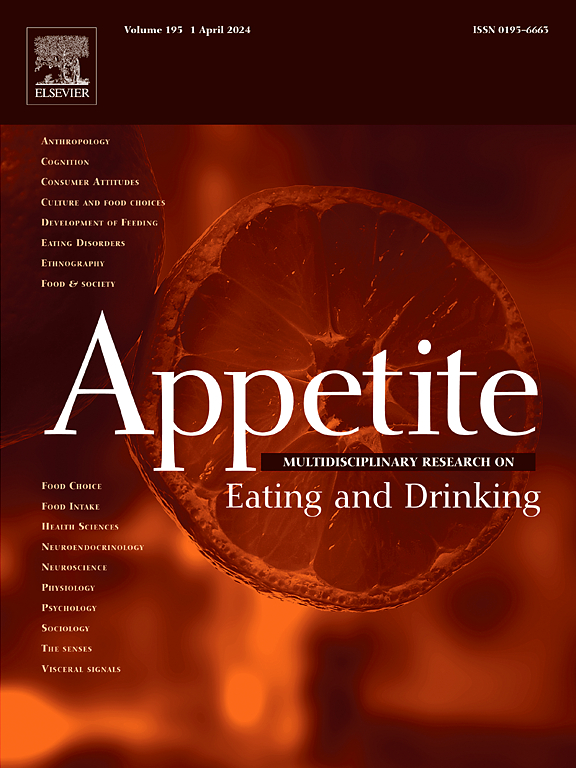Appetite and childhood malnutrition: A narrative review identifying evidence gaps between clinical practice and research
IF 4.6
2区 医学
Q1 BEHAVIORAL SCIENCES
引用次数: 0
Abstract
Severe Acute Malnutrition (SAM) is a critical global health issue, contributing to approximately one-half of all child mortality worldwide. SAM management guidelines recommend the use of appetite assessment determined by an “appetite test” to distinguish between complicated and uncomplicated SAM, subsequently guiding clinical decisions regarding outpatient versus inpatient care and discharge from hospital. Despite the widespread utilization of this recommendation, its validity lacks substantial evidence within the existing literature. Hence, the aims of this narrative review were to provide an overview of the SAM diagnostic and management guideline recommendations concerning the use of appetite assessment; to review the existing knowledge base supporting this clinical practice. The review identified gaps between the clinical use of appetite assessment in SAM management and the available supporting scientific evidence. Additionally, both the opportunities and challenges associated with appetite assessment methods used in clinical practice were highlighted and discussed in relation to existing literature. Further studies with more rigorous methods are needed to bridge these gaps and formulate evidence-based clinical practice. There is also a need to adapt and validate the existing appetite assessment tools to ensure they are tailored to the specific population, setting, and primary purpose of assessing appetite in children who have already developed SAM.
食欲与儿童营养不良:临床实践与研究之间证据差距的叙述性回顾。
严重急性营养不良是一个严重的全球健康问题,约占全世界所有儿童死亡率的一半。SAM管理指南建议使用“食欲测试”确定的食欲评估来区分复杂和非复杂的SAM,随后指导门诊与住院治疗和出院的临床决策。尽管这一建议被广泛采用,但其有效性在现有文献中缺乏实质性证据。因此,这篇叙述性综述的目的是提供一个关于使用食欲评估的SAM诊断和管理指南的概述;回顾支持该临床实践的现有知识基础。该综述确定了在急性胃食管炎管理中食欲评估的临床应用与现有的支持科学证据之间的差距。此外,根据现有文献,强调并讨论了与临床实践中使用的食欲评估方法相关的机遇和挑战。需要用更严格的方法进行进一步的研究,以弥合这些差距,并制定基于证据的临床实践。还需要调整和验证现有的食欲评估工具,以确保它们适合特定的人群、环境和评估已经发展为SAM的儿童食欲的主要目的。
本文章由计算机程序翻译,如有差异,请以英文原文为准。
求助全文
约1分钟内获得全文
求助全文
来源期刊

Appetite
医学-行为科学
CiteScore
9.10
自引率
11.10%
发文量
566
审稿时长
13.4 weeks
期刊介绍:
Appetite is an international research journal specializing in cultural, social, psychological, sensory and physiological influences on the selection and intake of foods and drinks. It covers normal and disordered eating and drinking and welcomes studies of both human and non-human animal behaviour toward food. Appetite publishes research reports, reviews and commentaries. Thematic special issues appear regularly. From time to time the journal carries abstracts from professional meetings. Submissions to Appetite are expected to be based primarily on observations directly related to the selection and intake of foods and drinks; papers that are primarily focused on topics such as nutrition or obesity will not be considered unless they specifically make a novel scientific contribution to the understanding of appetite in line with the journal's aims and scope.
 求助内容:
求助内容: 应助结果提醒方式:
应助结果提醒方式:


